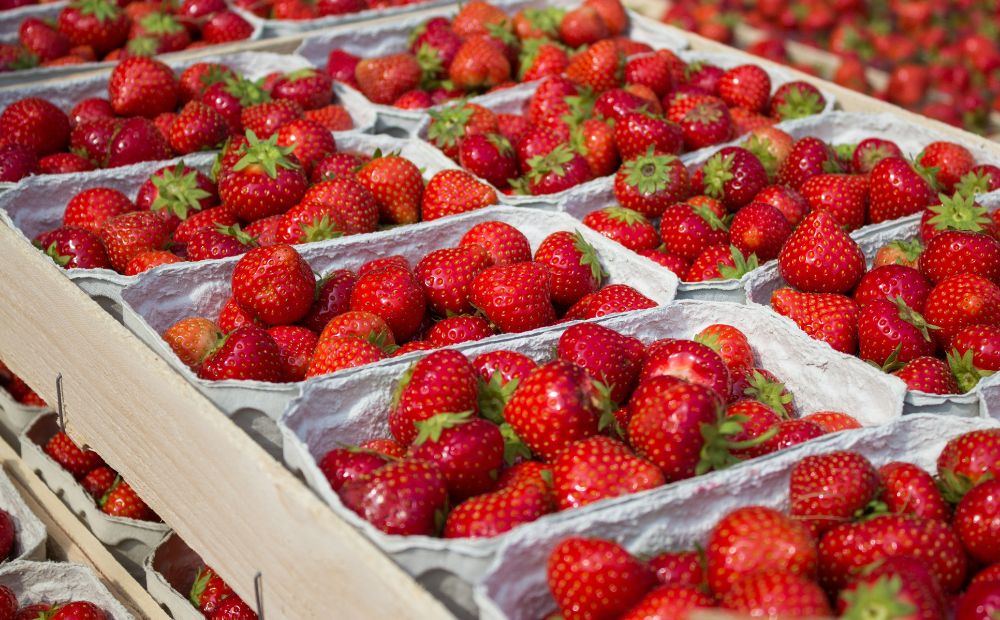Four questions about service and grower packaging

An amendment to the Waste Act regarding the definition of a packaging producer entered into force at the beginning of 2024. The producer of service and grower packaging is no longer the company that fills these types of packaging but rather the Finnish manufacturer or importer of the packaging itself.
“The underlying aim is to make things easier for small businesses. The EUR 1 million turnover limit was removed as of 2024, meaning companies of all sizes now fall under the producer responsibility system. Many small businesses affected by the change only use service and grower packaging. The purpose of the reform was to ensure that these small companies would not have to join the producer responsibility scheme for packaging as the producer responsibility obligations for service and grower packaging is borne by their Finnish manufacturers or importers.”
This is how Rinki’s specialist Heidi Plattonen, who is also in charge of Rinki’s packaging data audits, explained the background to the changed definition. But what is service and grower packaging, and what do companies that use, manufacture or import it need to consider? We asked Plattonen four questions about service and grower packaging.
What type of packaging is service packaging?
Service packaging is used for packing food and other products directly for consumers at the point of sale. This means that service packaging is always consumer packaging. Examples of service packaging include plastic or paper shopping bags provided free or sold in shops, various types of takeaway packaging, pizza boxes, sushi boxes and bags for pick & mix sweets.
However, it is important to remember that a particular type of packaging may or may not be service packaging. This is determined not only by the packaging itself but also by the situation in which the packaging is used. Service packaging is always filled at the point of sale. For example, if a shop that sells sushi packs it in takeaway boxes in the shop and places the servings on a shelf, the takeaway boxes are considered service packaging. However, if the sushi is packed in similar boxes in a sushi restaurant and transported to a shop, it is not service packaging.
Online sales also make it difficult to define service packaging. As a rule, the packaging used by an online shop is not service packaging. However, if a company uses the same plastic bags that meet the definition of service packaging in its online shop and physical shop, the plastic bags used for the online shop also come under the definition of service packaging.
The amendment to the Waste Act inevitably creates a few borderline cases, in which it is difficult to determine which party has the producer responsibility. The situation used to be very clear as it was always the company that filled the packaging.
What type of packaging is grower packaging?
Grower packaging is packaging used by an agricultural or horticultural company when it sells its own, unprocessed produce. There are many defining factors to consider. Firstly, it should be noted that grower packaging must only contain agricultural or horticultural produce, such as strawberries or vegetables. The produce must also be unprocessed, meaning that it has only undergone a simple preparation process, such as washing or cleaning.
Secondly, the produce must be produced by the agricultural or horticultural business itself. This excludes certain parties: packaging used by the food industry, wholesalers and packing plants is never grower packaging, even if the products are unprocessed.
Unlike service packaging, the definition of grower packaging does not limit the type of customer the packed product is sold to. For example, a strawberry farm can sell unprocessed strawberries directly from the farm to a grocery shop. At the farm, the strawberries are packed in punnets, the punnets in cardboard boxes and the cardboard boxes on pallets. All of this packaging is grower packaging, even if only the boxes are sold to consumers.
As with service packaging, it should be noted that particular packaging is sometimes grower packaging and sometimes not. For this reason, we cannot draft a list that includes all types of service and grower packaging, even if it would help companies when they report their data. You can always call Rinki’s customer service team if you have any problems with the definitions.
What should I do if my company no longer has producer responsibility for service and grower packaging as of 1 January 2024?
The 2023 service and grower packaging data in ongoing reporting is submitted by the producer company according to the producer definition in force in 2023, i.e. the company that filled the packaging. It is essential to remember to report 2023 service and grower packaging data on two forms: the packaging data declaration form as well as the compensation form for service and grower packaging.
Users of service and grower packaging only report these types of packaging twice in 2024. Those operating under the old producer definition still report the 2023 data on the packaging data declaration form, which ensures that the 2023 packaging statistics are accurate, while the compensation form is used to ensure companies do not have to pay recycling fees for packaging that they are no longer responsible for in 2024. If a user of service or grower packaging imports the packaging that it uses, the packaging is not reported on the compensation form, and the importer will continue to have the producer responsibility for the packaging in the future.
I would advise companies to think carefully about whether they are using service or grower packaging and to report these types of packaging meticulously so they can avoid paying fees for which they are not liable and so Rinki can compile accurate packaging statistics.
How will the change affect companies with producer responsibility for service and grower packaging from 1 January 2024 onwards?
Companies that will have newly come under producer responsibility for service and grower packaging, i.e. Finnish manufacturers of packaging and importers of empty packaging, will be asked in early 2025 to report the quantities of service and grower packaging they have placed on the market in 2024. The 2024 recycling fees for these types of packaging will be invoiced to the new producers retrospectively in spring 2025. I would advise manufacturers and importers to take this into account when they collect data for their reports to be submitted next year.
Those who fall under the producer responsibility system should also be prepared to clarify the further uses of their products. As stated above, certain packaging may or may not be considered service or grower packaging. For example, if a company manufactures plastic boxes to be used in a salad bar, the company has producer responsibility for the boxes as they are considered service packaging. However, if screws are packed in the same boxes at a factory and the boxes of screws are delivered to a hardware store to be sold, the company that packed the screws is the producer. For the manufacturer or importer of packaging to no longer fall under producer responsibility in such cases, it must be able to demonstrate that the packaging has not been used as service or grower packaging.
There are many changes and much to learn. Rinki has compiled a list of Finnish manufacturers of service and grower packaging, and we plan to approach them soon. It is important that companies understand these changes that will come into effect in the future.
The amendment to the definition of producer responsibility for service and grower packaging follows an amendment to the Waste Act. Learn more about the change in an earlier article published by Rinki.
